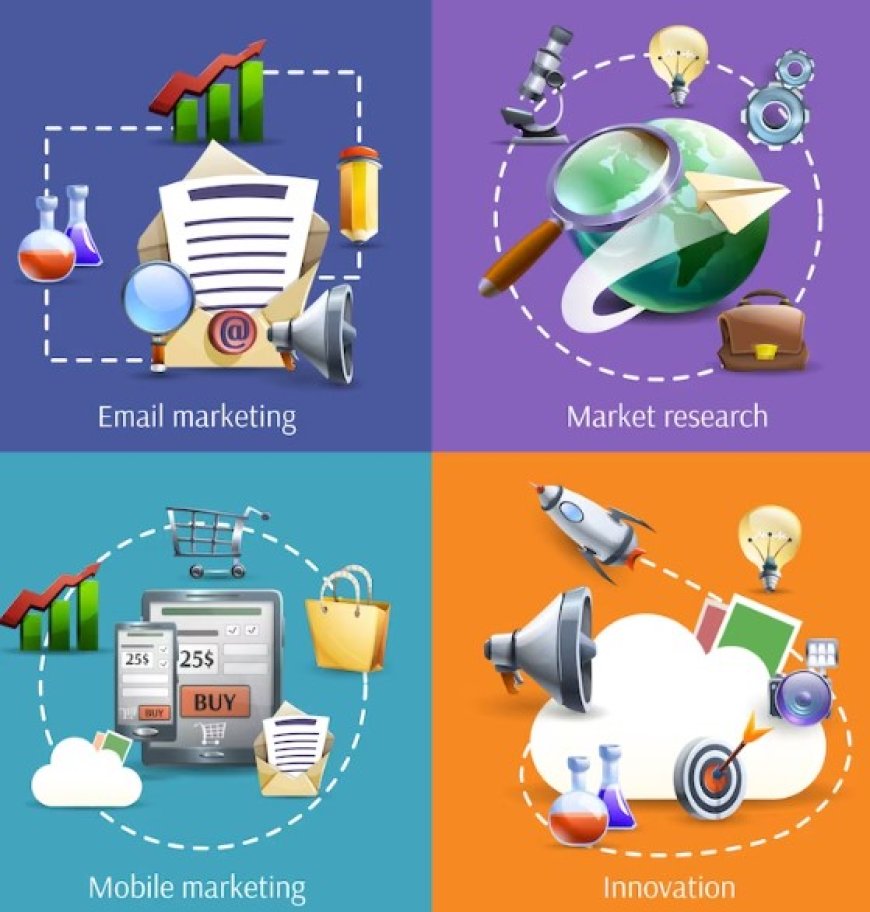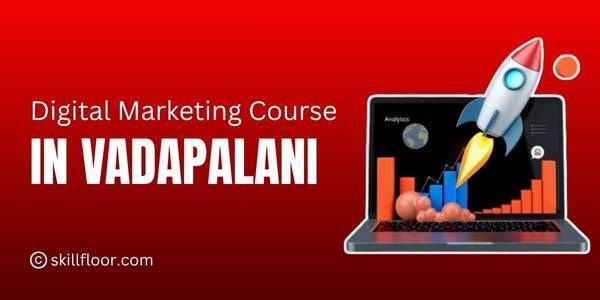Digital Marketing Processes: The Friendly Path to Success
Unlock the future of data science in digital marketing! Discover how effective processes pave the way to success. Explore now!

In the dynamic realm of digital marketing, success lies in the effective execution of various processes. These processes form the backbone of every digital marketing strategy, guiding businesses on their path to reaching and engaging their target audience. Let's explore the key digital marketing processes in a friendly manner, and how they contribute to the overall success of a business.
Market Research and Analysis
Market research involves gathering data and insights about the target audience to understand their needs, preferences, behaviors, and purchasing patterns. By conducting surveys, interviews, and analyzing demographic and psychographic information, businesses can develop a clear picture of their ideal customers. This friendly process helps tailor marketing strategies to effectively reach and engage the target audience.
Through market research, businesses can uncover untapped opportunities and potential gaps in the market. By studying customer needs and analyzing competitors, businesses can identify areas where they can offer unique value or differentiate themselves from competitors. This friendly process enables businesses to develop products, services, or marketing campaigns that fill those gaps and meet customer demands effectively.
Market research helps businesses stay informed about the latest industry trends and developments. By monitoring consumer behavior, technological advancements, and market shifts, businesses can adapt their strategies to stay ahead of the curve. This friendly process enables businesses to identify emerging trends, embrace new technologies, and align their marketing efforts with evolving customer expectations.
Goal Setting and Strategy Development
Clear goals are the compass that guides digital marketing efforts. Whether it's increasing brand awareness, driving website traffic, or boosting conversions, businesses need to define their objectives. Once goals are established, a friendly strategy is developed, outlining the steps and tactics to achieve them. This includes choosing the right digital marketing channels, creating engaging content, and identifying key performance indicators (KPIs) to measure success.
Website Optimization
A friendly website starts with a user-friendly design. It involves creating a visually appealing and intuitive layout that makes it easy for visitors to navigate and find the information they need. By incorporating clear navigation menus, logical page hierarchy, and intuitive call-to-action buttons, businesses can ensure a seamless browsing experience that keeps visitors engaged.
In today's mobile-centric world, optimizing websites for mobile devices is crucial. A friendly website is responsive, meaning it adapts to different screen sizes and devices, ensuring a consistent experience for users across desktops, tablets, and smartphones. By embracing mobile optimization, businesses can cater to the growing number of mobile users and improve their website's accessibility and usability.
In the fast-paced digital world, visitors have little patience for slow-loading websites. Website optimization involves optimizing images, minifying code, and leveraging caching techniques to ensure quick loading times. A friendly website loads swiftly, providing a seamless browsing experience and reducing the chances of visitors bouncing off the site.
Content Creation and Marketing
Content lies at the heart of digital marketing. This friendly process involves creating valuable and relevant content that resonates with the target audience. From blog posts and articles to videos and infographics, businesses need to develop content that educates, entertains, and inspires. Content marketing strategies encompass content creation, distribution, and promotion across various digital channels, such as social media, email marketing, and search engines.
Social Media Management
Social media platforms offer a friendly and engaging environment to connect with customers, build brand awareness, and foster relationships. Managing social media involves creating and sharing content, engaging with followers, and monitoring conversations. By establishing a consistent social media presence and tailoring content to each platform, businesses can amplify their reach, drive engagement, and cultivate a loyal following.
Search Engine Optimization (SEO)
SEO is a friendly process that helps businesses improve their visibility in search engine results. By optimizing websites and content for relevant keywords, businesses can increase their organic rankings and drive targeted traffic. This process includes on-page optimization, technical SEO, and off-page link building. Effective SEO strategies align with search engine algorithms and user intent, resulting in higher visibility and increased website traffic.
Paid Advertising Campaigns
Paid advertising campaigns, such as pay-per-click (PPC) and display ads, are essential for businesses aiming to reach a wider audience quickly. This friendly process involves setting budgets, selecting target keywords, creating compelling ad copies, and monitoring performance. Paid advertising allows businesses to appear at the top of search engine results or display their ads on relevant websites, driving immediate visibility and attracting potential customers.
Analytics and Performance Tracking
To measure the success of digital marketing efforts, businesses need to track and analyze their performance. Friendly analytics tools provide valuable insights into website traffic, user behavior, conversion rates, and campaign effectiveness. By monitoring these metrics, businesses can identify areas for improvement, optimize their strategies, and make data-driven decisions.
Email Marketing
Email marketing is a friendly process that involves sending targeted messages and offers to a business's subscribers or customers via email. This allows businesses to nurture relationships, provide valuable content, promote products or services, and drive conversions. Email marketing campaigns can be personalized, automated, and tracked for effectiveness, helping businesses stay connected with their audience and drive repeat business.
Conversion Rate Optimization (CRO)
CRO is a friendly process aimed at maximizing the percentage of website visitors who take a desired action, such as making a purchase, filling out a form, or subscribing to a newsletter. It involves analyzing user behavior, identifying areas of improvement, and implementing changes to optimize the conversion process. By making the user experience seamless, businesses can increase conversions and improve their overall ROI.
Customer Relationship Management (CRM)
CRM is a friendly process that focuses on managing and nurturing customer relationships. It involves collecting and analyzing customer data, tracking interactions, and implementing strategies to enhance customer satisfaction and loyalty. By leveraging CRM tools, businesses can personalize their communications, understand customer preferences, and provide tailored experiences, ultimately driving customer retention and advocacy.
Reputation Management
Reputation management is the friendly process of monitoring and managing a business's online reputation. It involves actively monitoring online reviews, social media mentions, and other forms of feedback to address customer concerns and maintain a positive brand image. By promptly responding to customer feedback, businesses can build trust, improve customer satisfaction, and strengthen their online reputation.
Continuous Optimization
The digital landscape is ever-evolving, with new technologies, trends, and consumer behaviors emerging constantly. Continuous optimization allows businesses to stay relevant and up-to-date with these changes. By regularly reviewing and updating their strategies, businesses can adapt to market shifts, embrace new technologies, and align their marketing efforts with evolving customer expectations.
Identifying Areas for Improvement
Continuous optimization involves closely monitoring key performance indicators (KPIs) and analyzing data to identify areas for improvement. By studying metrics such as website traffic, engagement rates, conversion rates, and customer feedback, businesses can pinpoint areas where their marketing efforts may be falling short. This friendly process enables businesses to uncover bottlenecks, identify weaknesses, and optimize their strategies accordingly.
In brief, Digital marketing has revolutionized the way businesses connect with their target audience, promote their products or services, and drive business growth. It offers a wide range of tools, strategies, and processes that can be tailored to fit the unique needs and goals of any business.
Through digital marketing, businesses can reach a global audience, engage with customers in real-time, and measure the effectiveness of their efforts with data-driven insights. It enables businesses to build brand awareness, generate leads, increase conversions, and foster long-term customer relationships.
Digital marketing provides numerous benefits, including cost-effectiveness, enhanced targeting and personalization, real-time customer feedback, and the ability to adapt and stay ahead of the competition. It empowers businesses to optimize their online presence, leverage various channels and platforms, and connect with customers across multiple touchpoints.



























































